When was the human face first portrayed? Most probably in (Roman) Egypt, about 2,000 years ago.
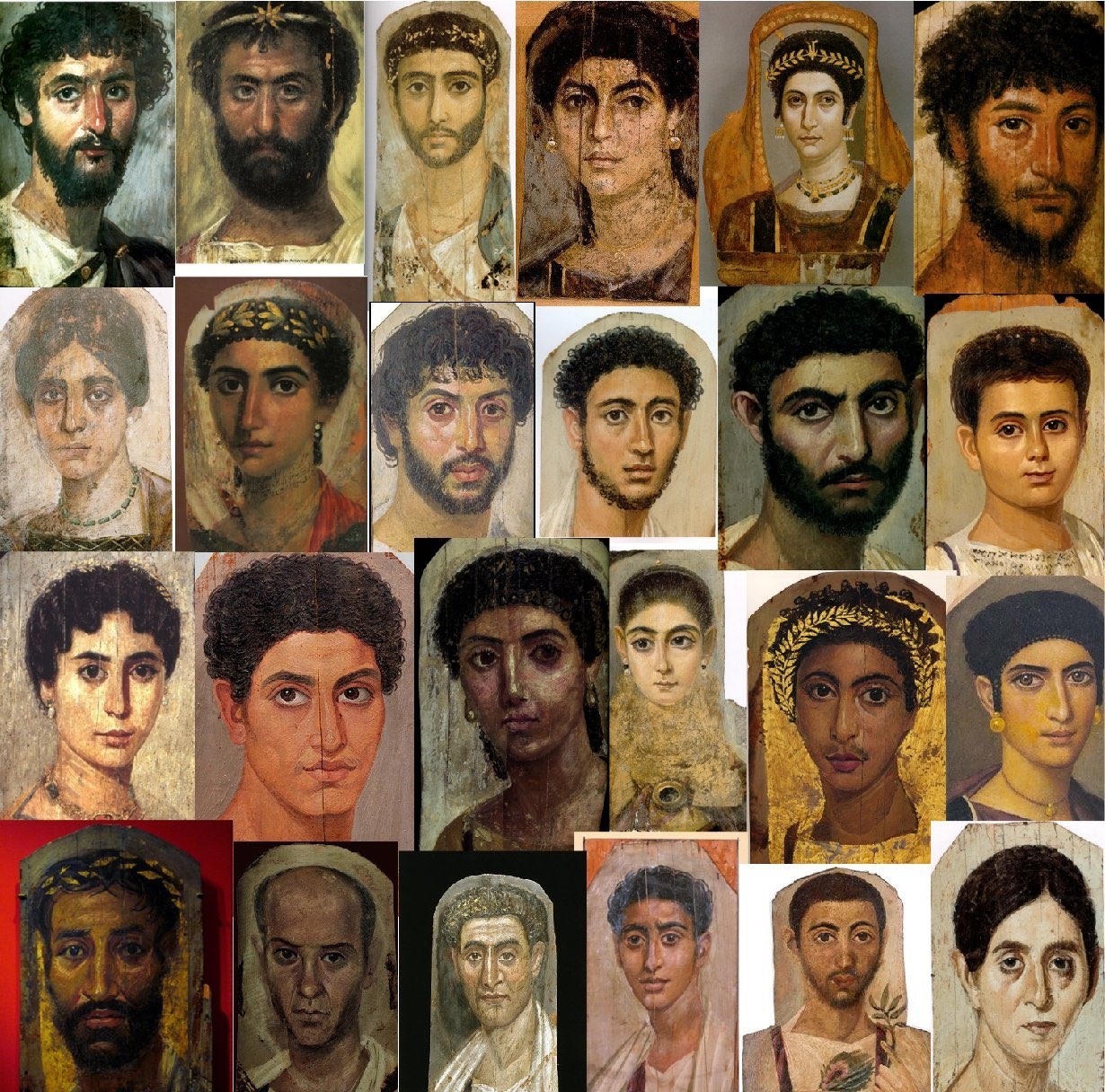
The Faiyum mummy portraits are regarded as the oldest portrayal of the human face, according to Egyptian Geographic. For the first time in history, these portrays showcased the human face from the front, instead of depicting the person laterally. Even if the body was drawn from the front or the back, as shown in paintings found in the pharaos’ temples, the Faiyum portraits depict the person frontally. They were a major leap away from the conventional Egyptian painting, at a time when Egypt had opened up to the outside world after keeping to itself for many centuries.
The portrays depict the entire faces of persons who lived more than 2000 years ago frontally (in some cases their heads are turned to the left slightly). While there is disagreement as to whether the features of those faces are Egyptian, Greek, Roman, or even Byzantine, the names written on them are Greek, while their clothes, hairstyles and ornaments are Roman.
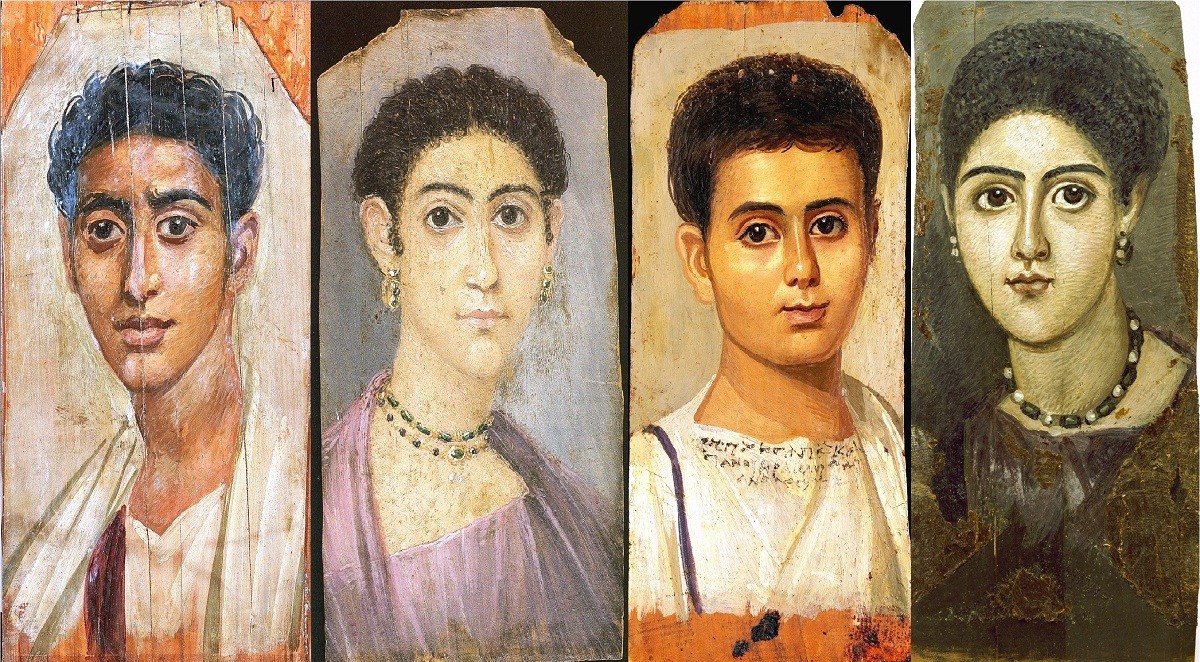
The first of the mummy portraits were discovered in 1615 by Italian explorer Pietro Della Valle. Archaeological excavations followed, with some mummies with portraits transported to Europe (they are now in the Albertinum in Dresden, Germany). In the four centuries that have passed since, about 900 mummy portraits were discovered in the necropolis of Faiyum. Due to Egypt’s hot and dry climate, the paintings are very well preserved.
Painted in Greco-Roman style, the Fayum portraits are unique inasmuch as they are not just traditional funerary paintings, but portraits of the persons inside the coffin, who have a kind of calm and timeless look. French philosopher and novelist André Malraux described them as faces looking forward to eternal life. However, he believed them to be real faces that correspond to reality, or represent a midway between life and death. Thus, these portraits are a mixture of the three civilizations; Pharaonic, Greek, and Roman.
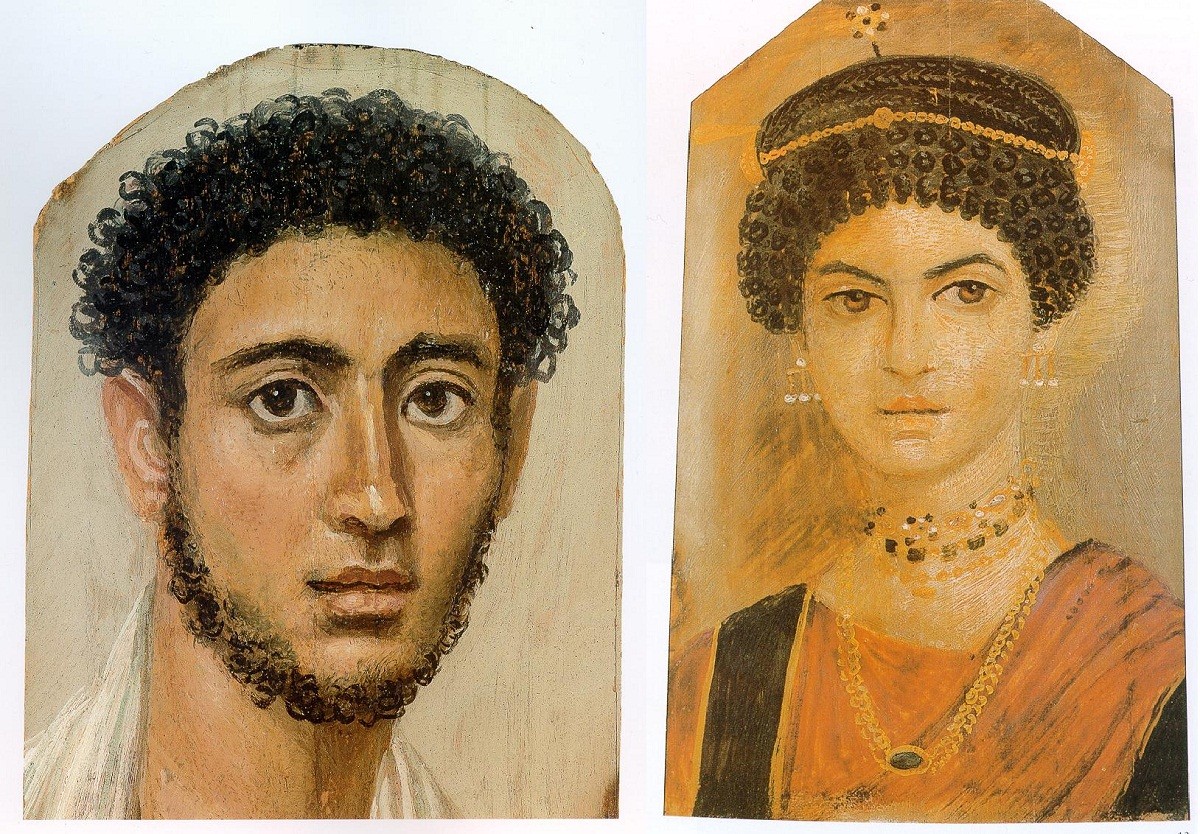
Panel painting in Egypt is believe to have started at the beginning of the 1st century BC, when ancient Egyptians painted pictures of their dead on wooden boards attached to mummies. With the abolishment of mummification in the 3rd century AD, that art was gone, especially with the emergence of Coptic iconography, which is a natural extension of the Egyptian art in the 3rd and 4th centuries AD. For that reason, these faces were long considered part of Coptic art.
Although some of these portraits were found in areas far from Faiyum, such as Saqqara, El Alamein, and Sheikh Abadah, they were named after Faiyum because most of them were found in the Faiyoum basin, particularly from Hawara to central Egypt. The lack of literature on the portraits owes to many reasons – most importantly, their painters are unkown and they were scattered around the world, sometimes in the the Egyptian, Greek, and Coptic halls of the same museum.
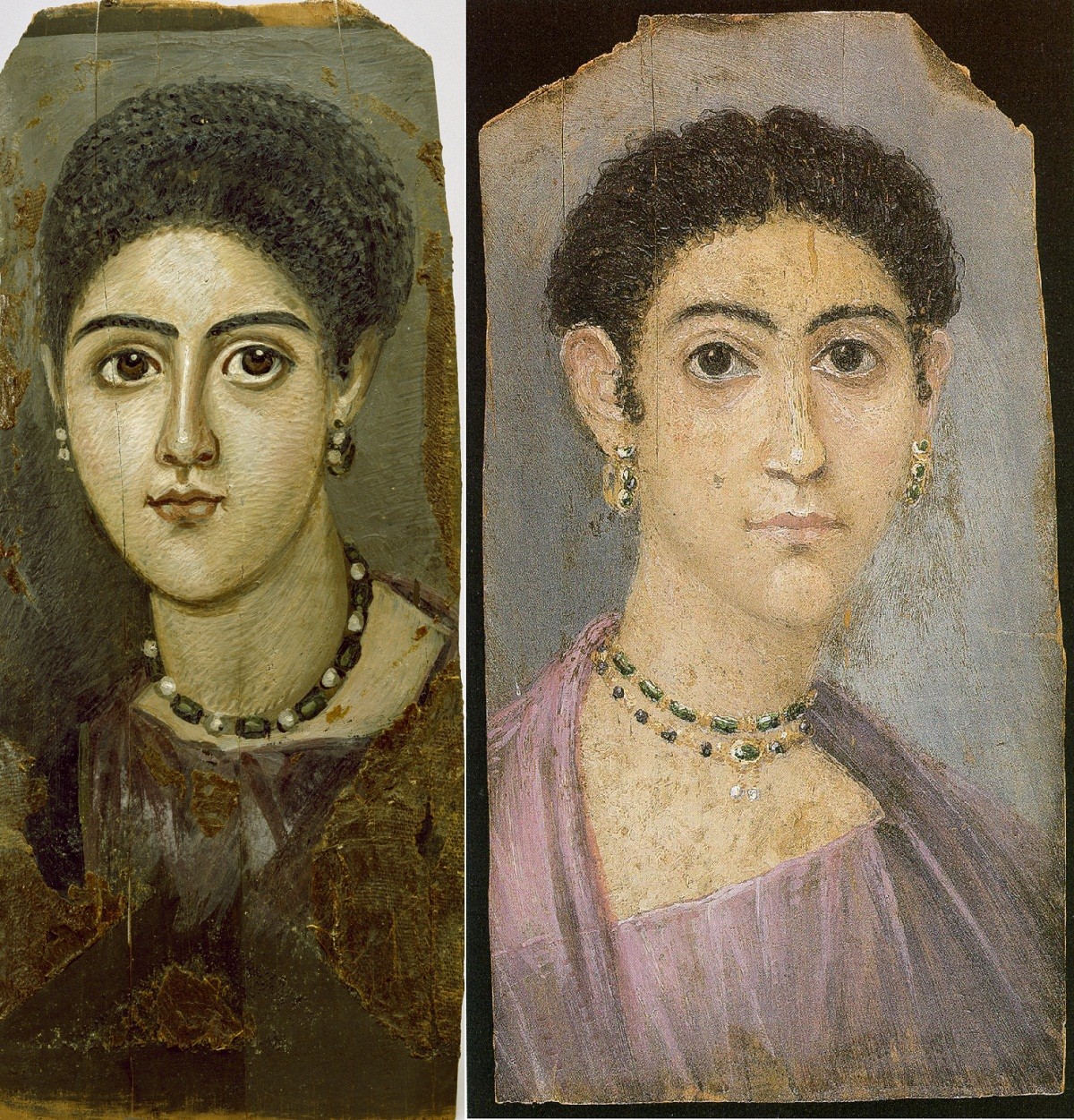
In 1887, the British Egyptologist Flinders Petrie started excavations at Hawara and found 81 portraits in a Roman necropolis that he showcased them at an exhibition in London. In 1910, he found further 70 portraits. Most of these portraits are on display in Cairo and London museums. Although his published studies are not entirely up to modern standards, they remain the most important source for systematic excavat
Other archaeologists discovered hundreds of more portraits, most of which were sent to Europe, including the one found in a Saccara Pyramid by Pietro Della in 1615.
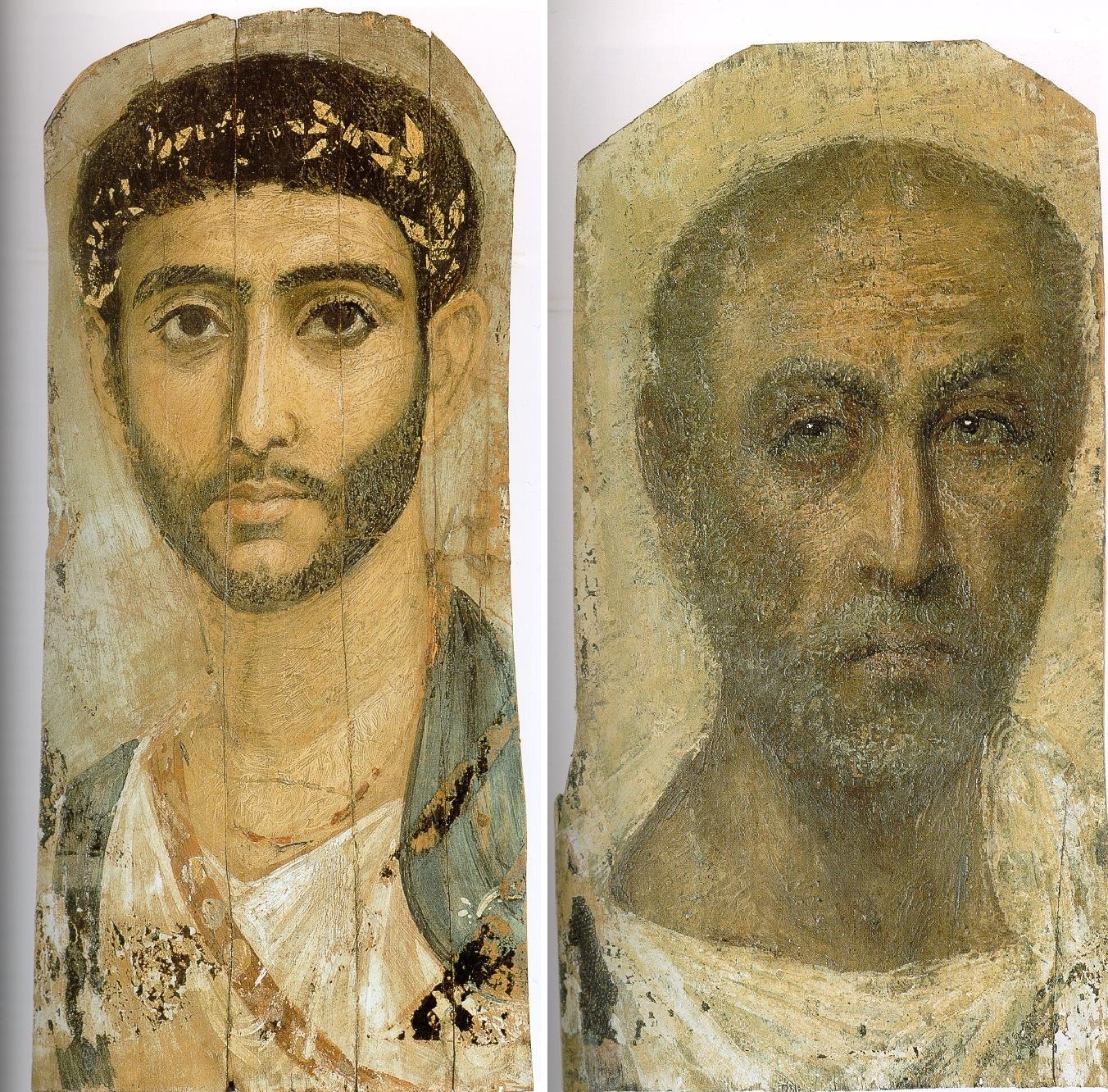
Some archaeologists believe that the Fayum portraits were painted during the lives of their owners and were on display in their homes until their death, to be ultimately used to cover the face of the mummy.
Others, however, believe that some of the portraits were painted after the death of their owners. Interestingly, some portraits were found without mummies.
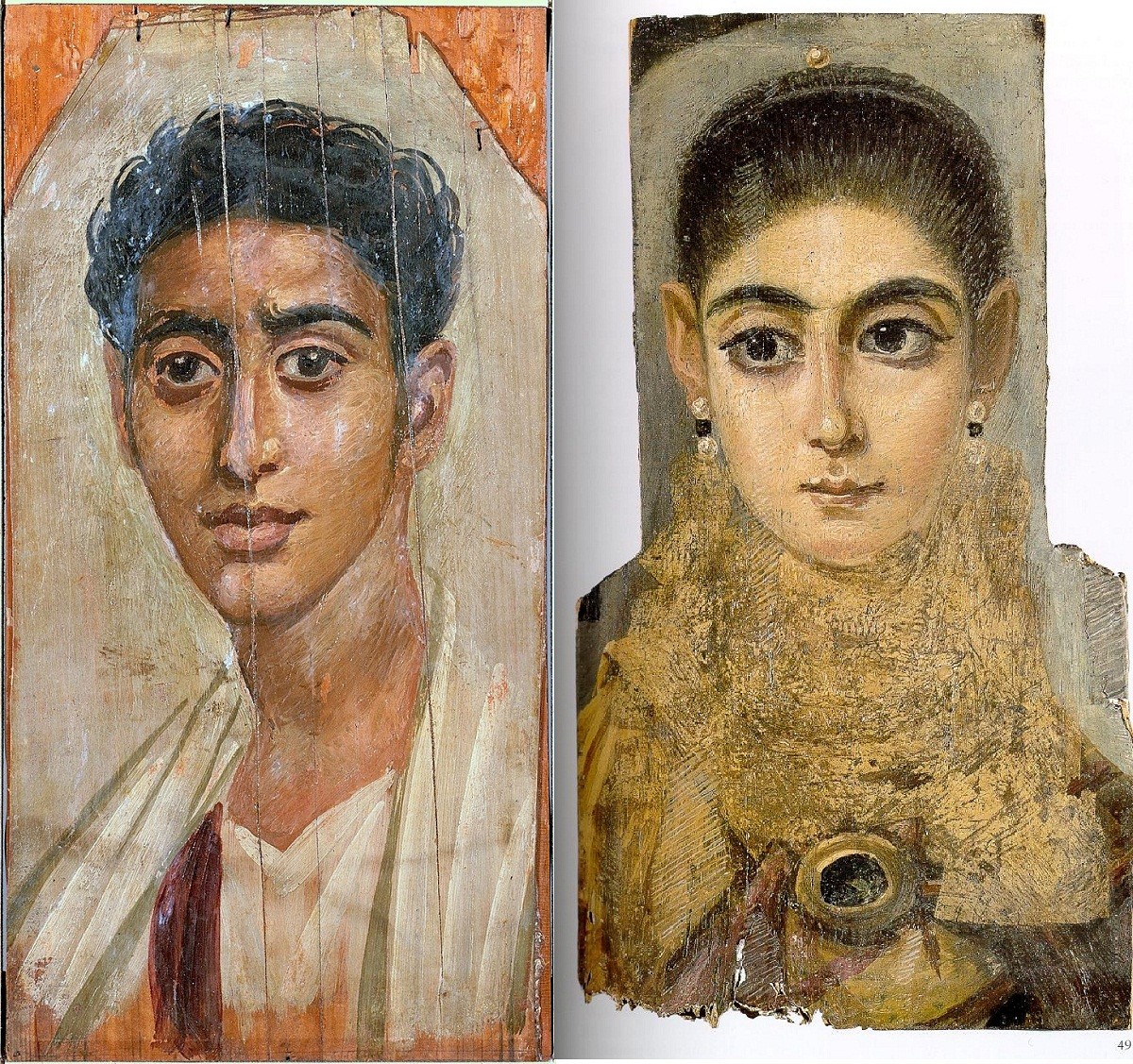
The Fayum portraits were painted on wood about a centimeter (0.4 inch) thick, such as citrus, cypress, and sycamore, and are up to 42 centimeters (16.5 inches) long and about 22 centimeters (8.5 inches) wide. The portrays were painted on the wood directly, sometimes after placing a layer of plaster, on the canvas directly, or after covering the cloth with a layer of plaster, then fine-tuning the picture. The layout was in black, and rarely, in red. The background was painted using a thick brush, or a painting knife instead, using the encaustic (wax) painting technique.
Four basic colors were used: white, yellow, red, and black, in order to draw the hair and the face. Additional colors, such as blue, green, and purple, were used in coloring clothes, jewelry, and crowns in a harmonious way. Gold was used to depict jewelry and wreaths, using real gold leaves, or a golden color. Egg tempera was used for gilding the image drawn using wax, which was later taken over by Byzantines.
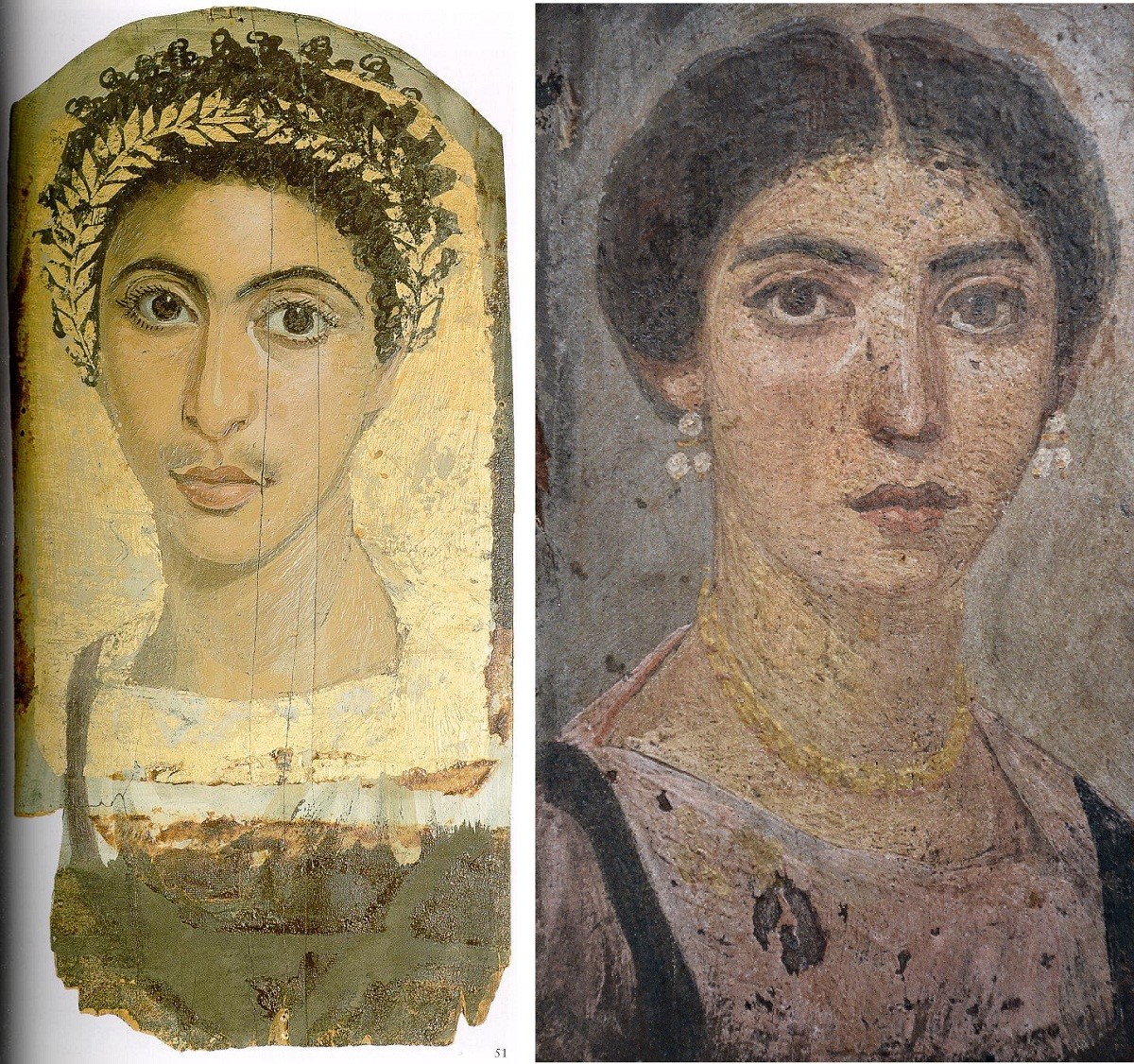
Bur who were the owners of these portraits? Were they Egyptians? Or did they belong to another nationality? We only know some of the owners, whose mummies were found with the portraits still attached to them. Their names are written in Greek or Demotic – sometimes with white color on the person’s neck. Most of those names are of Greek origin, such as Artemidus, Demos, and Hermione.
But that’s all we really know about them.

